3 Rosie’s Daughters Celebrate Our Mother’s Life Story by Norma Horton Bryant
Post #16 – Rosie’s Daughters: The “First Woman To” Generation Tells Its Story by Matilda Butler and Kendra Bonnett
+++++++++++++++++++++++++++++++++++++++++++++
Following is the first of a series of stories of Rosie the Riveter’s
Legacy. We invite you to tell your story, or your mother’s.
Please email us and we’ll send you the details. We look forward
to honoring many of the women who worked during World War II.
+++++++++++++++++++++++++++++++++++++++++++++
Marian Perkins Horton
By Norma Horton Bryant
We knew we wanted to honor our parents. We had no idea how deeply we would be moved in the process.
As a child I once asked my mother, “Why do you have those tiny scars on your arms and legs?” She tilted her head back and a smile came across her face as if she was reliving her memories. She told me, “They are from a time when I was a welder during the war.” It was obvious she wore those scars as though they were her medals. She could not have been more proud of her part in the war effort.
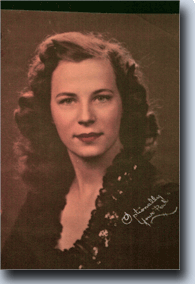 My mother, Marian Horton (Perkins at the time) was and still is, a beautiful woman with a strong sense of southern propriety, having grown up in Richmond, Virginia. I was intrigued as to what brought her into that world of work and made her enjoy the experience.
My mother, Marian Horton (Perkins at the time) was and still is, a beautiful woman with a strong sense of southern propriety, having grown up in Richmond, Virginia. I was intrigued as to what brought her into that world of work and made her enjoy the experience.
“I was just out of high school when I heard that Richmond Engineering was hiring women. They needed us to weld bomb racks, tank turrets and portable bridges.” I knew my mother loved adventure and the thought of serving her country this way must have been a perfect fit.
My sisters and I were always captivated by her stories. She told us a story of how the men already working on the lines had at first resented the women coming in and “doing men’s work.” They would try to intimidate the women by spitting chewing tobacco on their boots as they worked but my mother and a friend refused to be intimidated. Instead, they came up with a plan. They emptied tobacco pouches and filled them with shaved licorice. When they came to work for their next shift, the women each filled a cheek with “tobacco” as the men did. When the men spat on their boots, my mom and her friend spat licorice back on the men’s boots. Their spunk brought a laugh and cut the tension.
Another story we loved was about the time the “Truth or Consequences” radio show came to a Richmond theater to broadcast live for the GIs and local people. The premise of the show was to ask the contestants a riddle, and if they could not answer it they had to pay the consequences.
The producers wanted two women welders to be contestants so they came to Richmond Engineering and selected my mother and another woman for the show. They instructed the women to come to the theater after working all day, as they were, without cleaning up and still wearing their welding uniform, helmet and gloves. When they arrived, my mother and her co-worker were further “smudged up” and had their hair mussed before being sent onstage.
They were stumped by the riddle, “When is a door not a door?” Mom said they never would have thought to reply, “When it is ajar.” Mom and the other contestant had to pay the consequence, which was to be given a glamorous makeover and dressed in ball gowns, fur stoles and jewels. When they returned to the stage they received screams and cheers from the audience. To complete the Cinderella story, they were whisked off to a ball to dance the night away with two officers who were stationed nearby.
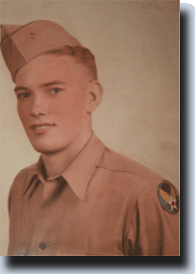 One more memory (and our favorite) was when my mother and friends, obviously dressed for a special occasion, were waiting for a bus. As they boarded, a couple of servicemen came up and asked them where they were going. My mother took notice of one handsome GI, but being a lady, would not tell him where they were going. The handsome GI, Eugene Horton, caught the next bus, asked where there was a dance that night and had the driver drop him off there. He found my mother and asked her to dance. They dated every time he had leave after that.
One more memory (and our favorite) was when my mother and friends, obviously dressed for a special occasion, were waiting for a bus. As they boarded, a couple of servicemen came up and asked them where they were going. My mother took notice of one handsome GI, but being a lady, would not tell him where they were going. The handsome GI, Eugene Horton, caught the next bus, asked where there was a dance that night and had the driver drop him off there. He found my mother and asked her to dance. They dated every time he had leave after that.
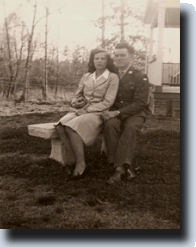 Several months later, the handsome GI received papers to report to South Carolina. Because they couldn’t stand to be separated, they were married. As Mom and Dad moved away from Richmond, Mom’s welding days ended. Obviously, her pride and fond memories did not.
Several months later, the handsome GI received papers to report to South Carolina. Because they couldn’t stand to be separated, they were married. As Mom and Dad moved away from Richmond, Mom’s welding days ended. Obviously, her pride and fond memories did not.
Mom always proudly told us that Dad had joined the Army the day he graduated from high school and that later he served in France.
Being very proud of both of our parents, my sisters, Janet Campbell and Lynn Dawes, and I found a way to honor them. We had no idea how deeply we would be moved in the process.
My sister Lynn has lived in England for about twenty years. In addition to teaching, she is a big bands singer. For many years she has performed at a WWII Memorial Weekend–an event Mom and Dad had enjoyed attending many years ago and often spoke of with great fondness.
The Severn Valley Railway “War Weekend” has been held every summer for the past fifteen years. The depots of the five towns along the line, connected by steam trains, are transformed to look as they did during the war. In addition to battle re-enactments, there are big band concerts with forties dance music. Re-creations of period residences and shops are set up. Re-enactors, musicians and the attending public dress in period attire that has special meaning to them. They engage in role-playing as a way of remembering those who served, supported and experienced WWII.
To celebrate our parents lives, Janet and I felt privileged to attend this event with our father this year. Sadly, because my mother has Alzheimer’s, she could not attend.
With several trips to Army surplus stores, we were able to recreate my dad’s uniform, which he wore proudly as he mingled and exchanged war stories with other veterans. My sister Lynn, dressed as a forties band singer when she performed, took pride in wearing the tailored suits my mother wore. My sister Janet and I dressed as Rosie the Riveter. We wore mock I.D. badges from Richmond Engineering using our mom’s name and a photo of her on our uniform as if we were our mother for the day.
There were people dressed to represent different branches of the military, including uniforms and costumes from Allied and Axis countries. The German Army officers gave our father a start. Even after so many years, he said the hair stood up on the back of his neck.
People came as Red Cross nurses, land girls, black market dealers and school aged children who were evacuated during the bombings. Attendees shared their stories of how the war influenced their lives and enjoyed listening to the memories of other people and their service on the ‘Home Front.’ Many of these people attend every year and were very welcoming to us as we were clearly there to participate.
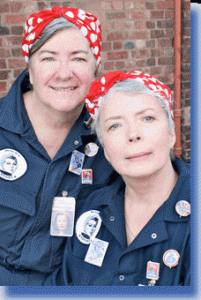 My sisters and I were able to share our mother’s story, as well as the spirit of the many Rosies of America with people attending this event who asked us about our Rosie attire and the photo of the “lovely lady” on the badges.
My sisters and I were able to share our mother’s story, as well as the spirit of the many Rosies of America with people attending this event who asked us about our Rosie attire and the photo of the “lovely lady” on the badges.
We had underestimated how much comfort it would give us to talk about her and her part in the war, especially since she can no longer do it for herself.
As the steam trains ran, there were flyovers by actual WWII planes. Using multiple speakers and special effects, air raids with realistic sounds of diving planes shooting at the station made our hearts race. Explosions were set off down the side train tracks to resemble bombs exploding. We found ourselves engulfed in the sights and sounds of 1942. This was at once awe inspiring and somewhat unsettling. We felt transported back into a time we had only heard described.
Listening to stories of bravery and sacrifice and soaking up the atmosphere of places that had been transformed gave us an even deeper sense of what it was like to be part of Mom and Dad’s wartime world.
We felt closer than ever to our parents, having taken a few steps in their shoes, if only by pretending.
{ 8 comments }
Rosie the Riveter and On-the-Job Safety
Post #15 – Rosie’s Daughters: The “First Woman To” Generation Tells Its Story by Matilda Butler and Kendra Bonnett
We always on the lookout for information about the Rosie the Riveter generation. Today, we found a World War II safety video about women working during the war. We thought we’d share it with you.
The focus in this video is hair. The interesting story behind all of this is that safety clothing was not available in women’s sizes at the time of the war. Steel toe shoes, safety gloves, and other safety articles were only available in men’s sizes. WWII and Rosie the Riveter changed many expectations.
{ 0 comments }
Rosie the Riveter’s Bandana
Post #14 – Rosie’s Daughters: The “First Woman To” Generation Tells Its Story by Matilda Butler and Kendra Bonnett
Rosie the Riveter, as portrayed in Howard Miller’s iconic poster, is shown wearing a red and white polka-dot bandana. And yes, women working in factories during World War II did wear bandanas to keep their hair out of the machines and equipment that they used.
After our collective memoir Rosie’s Daughters was published, Kendra and I wanted red bandanas with white polka dots. We thought they’d be lots of fun to wear and a wonderful way to share Rosie the Riveter’s legacy of strength, courage, and empowerment that she passed on to her daughters.
Then we started our search. We couldn’t find any bandana that was even close. We couldn’t even find a good fabric to make them from. Rosie’s bandana clearly was a random pattern while most fabric shows a regular set of rows and columns for the white dots. Hum. What to do?
We finally decided to design our own Rosie bandana. As soon as we began to show it, everyone wanted one. We created a Limited Edition I Rosie the Riveter bandana, which is now sold out. One of the last ones was purchased by photographer Gina Addison. In a recent email, she wrote, “The bandana I purchased on you website was used for a photoshoot to re-create the Rosie the Riveter image for the May ‘09 issue of Military Spouse Magazine” Gina sent us a copy of the cover and gave us permission to share it with you. Hope you enjoy seeing it as much as we did.
By the way, we have just introduced our Rosie the Riveter bandana, Limited Edition II. Same great polka dots, but this time we’ve embedded a profile of Rosie along with the inspirational words: We Can Do It! Pass It On! If you are interested, visit our STORE for more information.
{ 1 comment }
Rosie the Riveter: Are You One? Know One?
Post #13 – Rosie’s Daughters: The “First Woman To” Generation Tells Its Story by Matilda Butler and Kendra Bonnett
Thanks to the research we did for our collective memoir Rosie’s Daughters: The “First Woman To” Generation Tells Its Story, we’ve also learned a lot about Rosie the Riveter. Of course, Rosie is just the shorthand for all the women who worked did during World War II — in factories, in government agencies, in the military, in offices, on farms … well you get the idea. Many more women also did important work as volunteers with the Red Cross, USO, and many other organizations.
My coauthor, Kendra Bonnett, and I now want to capture as many of Rosie’s stories as possible. They were the original We Can Do It generation. They were role models for other women and still serve as role models today. Without the contribution of these women, we could not have won the war. Their determination, strength, courage, and inventiveness provide lessons for the modern day Rosie the Riveters — women in today’s workforce.
Please help us record these stories. If you worked or volunteered during WWII, we’d like to receive your story. Perhaps your mother or grandmother was a Rosie. If so, we’d like you to write her story and send it to us. We’re looking for stories that are about 1200 words that talk about her experiences during WWII. We’d also love to have two photos — one from WWII and a more recent one.
Help us preserve these important life stories.
Our commitment. We’ll create a special area on our website and post all stories. You can share your story or the story of your mother or grandmother with so many other women. In addition, we will choose some stories — ones that reflect the wide variety of experiences of these women — and include them in a book we are planning to showcase these women.
For now, please send us an email saying that you would like to submit a story — either of your experiences or of someone you know. We’ll send you additional details. You can just click on the CONTACT menu item above.
We look forward to hearing from you.
{ 0 comments }
FW2 Aretha Franklin and the Presidential Inauguration
Post #12 – Rosie’s Daughters: The “First Woman To” Generation Tells Its Story by Matilda Butler and Kendra Bonnett
The past several days have put a spotlight on a number of “First Woman To” (FW2) generation women. Here are three that I happened to see:
1. Sunday’s Meet the Press had historian FW2 Doris Kearns Goodwin on the panel discussing parallels between Barack Obama and Abraham Lincoln. Doris Kearns Goodwin has written books on several presidents and drew on her experiences when researching and writing about Lincoln. She said:
“I think to become concerned with history–maybe it’s because I love history so much–it makes you bigger, it enlarges you. I felt every day, living with Lincoln, as I woke up with him in the morning, went to bed with him at night–metaphorically, anyway–that I was becoming a better person. I mean, weird as that sounds, everybody who’s studied Lincoln feels that way. That’s why there’s 14,000 books. Ida Tarbell once said there’s no one more companionable than Lincoln. Let him be companionable for Obama, we’ll be in great shape.”
2. Then on Monday’s NewsHour, I watched FW2 Charlayne Hunter-Gault, the first African-American woman to attend the University of Georgia, discuss the global implication of Obama’s presidency. Hunter-Gault currently lives in South Africa and is a special correspondent for NPR.
3. And finally, this morning I listened to Aretha Franklin, another FW2, belt out My Country Tis of Thee. If you missed her performance, you can see it here on YouTube.
You can expect to continue to see our generation of women.
{ 0 comments }
Two Rosie’s Daughters Honored
Post #11 – Rosie’s Daughters: The “First Woman To” Generation Tells Its Story by Matilda Butler and Kendra Bonnett
We’ve done it again. The Rosie’s Daughters generation is still shining, still getting awards. The 2008 Kennedy Center honorees have just been announced — 6 outstanding individuals, 4 men and 2 women. Both of the women are Rosie’s Daughters — Barbra Streisand and Twyla Tharp. The Kennedy Center award is considered to be one of the most prestigious awards in the arts.
Barbra Streisand’s work is widely known. Perhaps you don’t know Twyla Tharp. Tharp is said to have reinvented modern dance blending jazz and ballet. Illustrating the diverse influences on the Rosie’s Daughters generation, she’s choreographed dances to Bob Dylan’s music and the Beach Boys.
“Twyla was challenging because she would never compromise on integrity,” said Michael Kaiser, president of the John F. Kennedy Center for the Performing Arts. “She taught me the difference between making a ballet and making art.”
When I was researching some of the famous FW2s for my book, I read Twyla Tharp’s memoir, The Creative Habit, a fascinating look at ways to bring creativity into your life and your passions. If you’re interested, I’ve included a link to her book.
CBS will broadcast the award ceremony on December 30.
Oh yes — here are the names of the men honored: Roger Daltry, Pete Townshend, Morgan Freeman, and George Jones.
{ 0 comments }
Rosie’s Daughters: The “Tipping Point” in Women’s History
Post #10 – Rosie’s Daughters: The “First Woman To” Generation Tells Its Story by Matilda Butler and Kendra Bonnett
Title: Rosie’s Daughters: The “Tipping Point” in Women’s History
Location: Sunol Valley Golf Club, Sunol, California
Description: Sponsored by AAUW, Fremont, this presentation is open to the public. Fee $20. For more information, go to: http://www.aauwfremontbranch.org and click on the calendar. Walk-ins are welcome.
On the historic anniversary of Pearl Harbor, Matilda Butler will talk about the vital role that women played during World War II. They changed, forever, the roles of women in the workplace. Although they went home after the war, at the urging of the government, they raised their daughters with a “can do” attitude. These daughters entered the workplace and have never left. This presentation, filled with the sights and sounds of Rosie the Riveter, is both entertaining and enlightening.
Come join AAUW, Fremont for a special afternoon. $5 of each purchase of an autographed copy Rosie’s Daughters: The “First Woman To” Generation Tells Its Story will be donated to AAUW’s Education Fund to help women obtain a better education.
Start Time: 14:00
Date: 2008-12-07
End Time: 16:00
{ 0 comments }
Thankful for wonderful women, daughters of Rosie the Riveter
Post #9 – Rosie’s Daughters: The “First Woman To” Generation Tells Its Story by Matilda Butler and Kendra Bonnett
Tomorrow is Thanksgiving. No snow here as I live in California. However, I’ve been getting a Thanksgiving flurry anyway. The flurry has been arriving in my email box — requests for my list of what I’m grateful for.
This reminds me of a Thanksgiving tradition that we created when our children were young and continue even today. Before we start the celebratory meal, each person around the table says what he or she is grateful for. A lovely time for us to reflect on the year, our own lives, our family, and our friends. I remember one year when our eldest son said, “I’m grateful to be employed.” Who would have guessed that 15 years later, the fortunate of us may put that as #1 on our gratitude list.
This year I’m especially grateful for the many women I’ve talked with since the publication of Rosie’s Daughters: The “First Woman To” Generation Tells Its Story. I meet lots of women when I give book presentations. Lately, I’ve spoken to AAUW, two Rotary groups, Women in Business, and am preparing for a special December 7, Pearl Harbor-themed talk.
The women I meet tell their own stories. Wendy Bell, a Rosie’s Daughter, stood and told the group that she was the first named in a one of several lawsuits against the Jaycees — back when they refused to admit women as regular members. She was already active with the organization, but couldn’t be a full member. Although another lawsuit made it first to the Supreme Court, Wendy was among the first to cheer when the Court found that the Jaycees had to admit women.
Some women tell stories of their mothers and grandmothers. One woman shared that her grandmother, a Rosie the Riveter, operated a forklift during WWII. Her boss said, “A woman can’t operate a forklift.” So, she had to train the next man that was hired how to run the forklift. Then, as man after man that she had trained left to join the military, she finally convinced her boss to let her drive the forklift. He did. And she did for the rest of the war.
Other women simply tell me how much my book has meant to them. They tell me that they’ll “never be the same.” The book has caused them to look at their lives, to reflect on their past, and hopefully to better plan for their future.
Well, you get the point. I’m grateful for both the warm reception that the book has received as well as for the opportunity to connect with so many thoughtful women.
Rosie’s Daughters, of course, couldn’t include what will happen next in the lives of these women. Some stories continue full-speed ahead. Nancy Pelosi, for example, had just been named Speaker of the House shortly before the book manuscript was completed. Her role and what she does is visible to all of us. Other lives have already been cut short. Anita Roddick, founder of The Body Shop and outspoken proponent of ethical business, fair trade, environmental awareness, animal protection, respect for human rights, died one month before publication of our book.
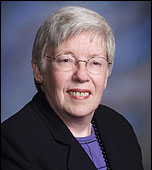 For most of us, our life stories change and let us find new ways to grow. This morning I received an email from an FW2. The Tennessee newspapers are carrying the story that Judge Martha Craig Daughtrey, a member of the U.S. Court of Appeals for the Sixth Circuit since 1993, is taking senior judge status in January. The Sixth Circuit handles Federal appeals for the states of Michigan, Ohio, Kentucky, and Tennessee.
For most of us, our life stories change and let us find new ways to grow. This morning I received an email from an FW2. The Tennessee newspapers are carrying the story that Judge Martha Craig Daughtrey, a member of the U.S. Court of Appeals for the Sixth Circuit since 1993, is taking senior judge status in January. The Sixth Circuit handles Federal appeals for the states of Michigan, Ohio, Kentucky, and Tennessee.
As one newspaper article said, “Breaking barriers throughout her career, Daughtrey became the first woman appointed to the faculty of Vanderbilt University School of Law and later became the first woman on both the Tennessee Court of Criminal Appeals and the Tennessee Supreme Court.” Senior status for Judge Daughtrey means her work load will be lighter and, as she says, “no more death penalty cases.”
And in what I think is true FW2 style, she says, “Some folks may think I’m wrapping up my career. I’m not, of course, just taking a breather.” We’ll stay tuned for the changes in Judge Daughtrey’s life and in the lives of so many other Rosie’s Daughters.
{ 0 comments }
Celebrating Women’s Right to Vote
Post #8 – Rosie’s Daughters: The “First Woman To” Generation Tells Its Story – Matilda Butler and Kendra Bonnett
Today, August 26, we celebrate the 88th anniversary of the passage of the 19th Amendment that allowed women to vote for the first time. It may seem like ancient history to young women. Yet when my mother was born, her mother could not vote. My mother was 11 years old before the the Woman Suffrage Amendment became law in 1920.
It took many years and untold numbers of women working together to achieve the goal of women voting. One hundred and sixty years ago, in 1848, the Seneca Fall Convention voted on and passed a Declaration of Sentiments. The 9th resolution, much ridiculed, was the declaration of a woman’s right to vote. The stories are legend of the struggle to finally pass an amendment to the Constitution that secured this right. The names of Elizabeth Cady Stanton, Lucretia Mott, Susan B. Anthony, Alice Paul, Carrie Chapman Catt and others still echo in our ears. Many of the women who worked in factories during World War I, perhaps the original Rosie the Riveters, urged President Wilson to push for a woman’s right to vote. Their petitions and marches emphasized that if they were valued enough to work for the country’s war efforts, they should be valued enough to be given the right to vote.
Thanks to Bella Abzug, August 26th is known as Women’s Equality Day, a date chosen to honor the passage of the 19th amendment. Bella Abzug. Many of us remember this fiery woman with her trademark hats, first Jewish woman elected to Congress, Founder of Women Strike for Peace, Co-founder of National Women’s Political Caucus, and so much more. Not long after she was elected to the House of Representatives, she began working for a day to officially celebrate this important turning point in women’s history and was successful in 1971.
Abzug represents another of the early torchbearer women who broke through gender barriers so that other women might follow in her path. In our book, Rosie’s Daughters, we celebrate a whole generation of women who collectively broke more barriers than any previous generation. They opened doors for Boomer women who have carried on with creating new opportunities for following generations of women.
But let’s not just celebrate Women’s Equality Day today. Be sure to celebrate again on November 4 (or a month earlier if you vote by mail) when you exercise your hard won right to vote.
{ 0 comments }
The “First At…” List
Post #7 for Kendra Bonnett and Matilda Butler — Authors of Rosie’s Daughters
Now this IS fun.
As you know, we’re always talking about the FW2 (First Woman To) Generation and the contributions they have made to ensuring opportunities for all of us. We have to thank them for getting all those shards of glass lodged in their scalps as they broke through the glass ceilings.
So I was doing a little Google search on FW2s and came across this. It’s a link to a list on biography.com, called “First At…” It’s a list of women throughout the years who have been the recognized as first to achieve some accomplishment.
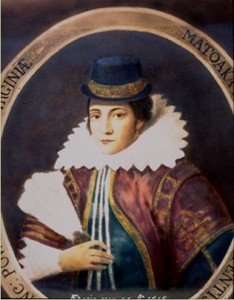 I find it particularly fun that Pocahontas leads off the list. She represents the first mixed-race marriage in the colonies.
I find it particularly fun that Pocahontas leads off the list. She represents the first mixed-race marriage in the colonies.
Many of the women you’ll find listed are from the 19th and early 20th century. This may leave you asking why the women born during WWII have rightly earned the title FW2 Generation. It’s because there are so many of them. They made it possible for many others to follow them. And they broke through in so many categories simultaneously: education, professions, entertainment, government, business and sports. Thanks to Rosie’s Daughters, being the “First Woman To” is no longer a rarity or exception. Thank you.
{ 0 comments }

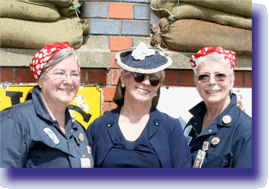
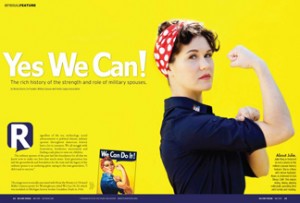
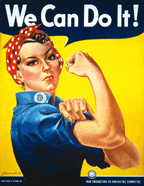



 Subscribe to our feed!
Subscribe to our feed!


